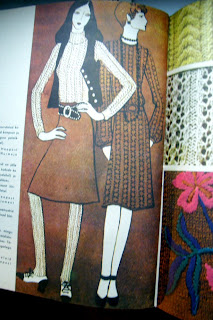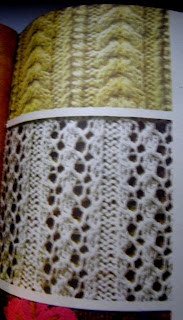Seekord väike ülevaade vanadest eesti ajakirjadest. Paljudel on "Siluett" ja "Käsitöö" kodus varnast võtta, mul kahjuks mitte, seetõttu käin aeg-ajalt antikvariaadis neid lehitsemas, ostan ka mõnikord. Näiteks eile.
A small review on old Estonian (Soviet-time) handicraft magazines. Many Estonians have "Siluett" and "Käsitöö" in their bookcases at home; unfortunately, I don't and that is why from time to time I visit a shop in the Old Town where I can leaf them and occasionally buy. For instance, yesterday.Tavaliselt ma ei kirjuta elust ega poliitikast. Siiski, väike selleteemaline kõrvalepõige: lehitsedes neid ajakirju on arusaadav, miks Eesti oli nn nõukogude Lääs. Oma kultuuri, sh ka materiaalse kultuuri ja tarbekunsti traditsiooni säilitamine. Mitte museaalsel kujul, vaid arendades ja sobitades kokku kaasajaga. Ajakirjade venekeelsed variandid osteti silmapilkselt ära ja levisid väljaspool Eestit. Paberi ja fotode kvaliteet on nagu on, asi pole selles. See kõik kokku on etnograafia. Nt mainitud traditsiooni säilitamine on täiesti auväärne doktoriväitekirja teema. Täpselt niisama võib keegi kunagi hiljem kirjutada meist, kes nüüd mingil põhjusel kukkusid kuduma, mustreid koguma ja teiste kudujatega suhtlema, nüüd juba rahvusvaheliselt.
Usually I do not write about life and politics. Still, a minor exception today: when you look into these magazines, it becomes clear why Estonia had a reputation of the Soviet West. Preservation of own culture, including material culture and applied art traditions. Not as in museums but constantly developing and adjusting it to the present day life. Russian-language versions of the magazines were immediately bought and spread beyond the borders of Estonia. The quality of the paper and of the photos is as it is, it is not the point. All this is ethnography. For instance, the mentioned retention of traditions would be a very respectable topic for a PhD thesis. Exactly in the same manner someone would write in the future about us who, for some reasons, started knitting, looking for stitch patterns and communicating with other knitters, this time internationally.Ostsin kaks "Käsitöö" numbrit, vahele jäi kogemata üks õpetuste leht "Nõukogude Naisest". Ka see on päris tähelepanuväärne. Allpool on õpetuse näide: joonis, mustriskeem, veel kusagil on kirjutatud, mis lõngast võiks selle kududa. Ja see pole konkreetse lõnga soovitus, vaid väga üldine, nt peenvillane vms.
I bought two issues of "Käsitöö" (Handycraft) and accidentally a pattern leaf from "Nõukogude Naine" (Soviet Woman) had got there. This is remarkable. Below you see an example of a pattern: a drawing, chart for stitch pattern, and somewhere a yarn recommendation is placed. And the recommendation is not exactly specific but rahter general, for instance, use thin wool, etc.  Käsitöö 16/1981:
Käsitöö 16/1981:Päris tuttav pitsimuster, sobib sviitrile (A. Varrak).
This lace pattern is familiar to me; apparently, it is good for sweaters as well (A. Varrak).

Rätiku muster:
Shawl stitch pattern: 
Veel üks muster:
One more pattern: Käsitöö 8/1972:
Käsitöö 8/1972:Mõnel mudelil puudub sootuks foto, on vaid joonistus (L. Heapost/I. Nurmoja/R. Klement). Sellegipoolest köidavad joonistused pilku ja tahaks ideesid kohe kasutada.
Some garments are not accompanied by photos but by drawings (L. Heapost/I. Nurmoja/R. Klement). Nevertheless, they attract attention and make you want to try out the ideas immediately.

Mustrid:
Stitch patterns:
Oma must-valges lakoonilisuses ja minimalismis meeldivad mulle ka need vestid/topid (M. Kanasaar/R. Klement):
I like these vests/tops in their black-and-white laconic style and minimalism (M. Kanasaar/R. Klement):

Ajakirjades on palju muud: tikkimine, mütsid, kindad jne. Tegin valiku oma maitse järgi.
The magazines contain a lot of other staff: embroidery, hats, mittens etc. I made a selection according to my taste.
